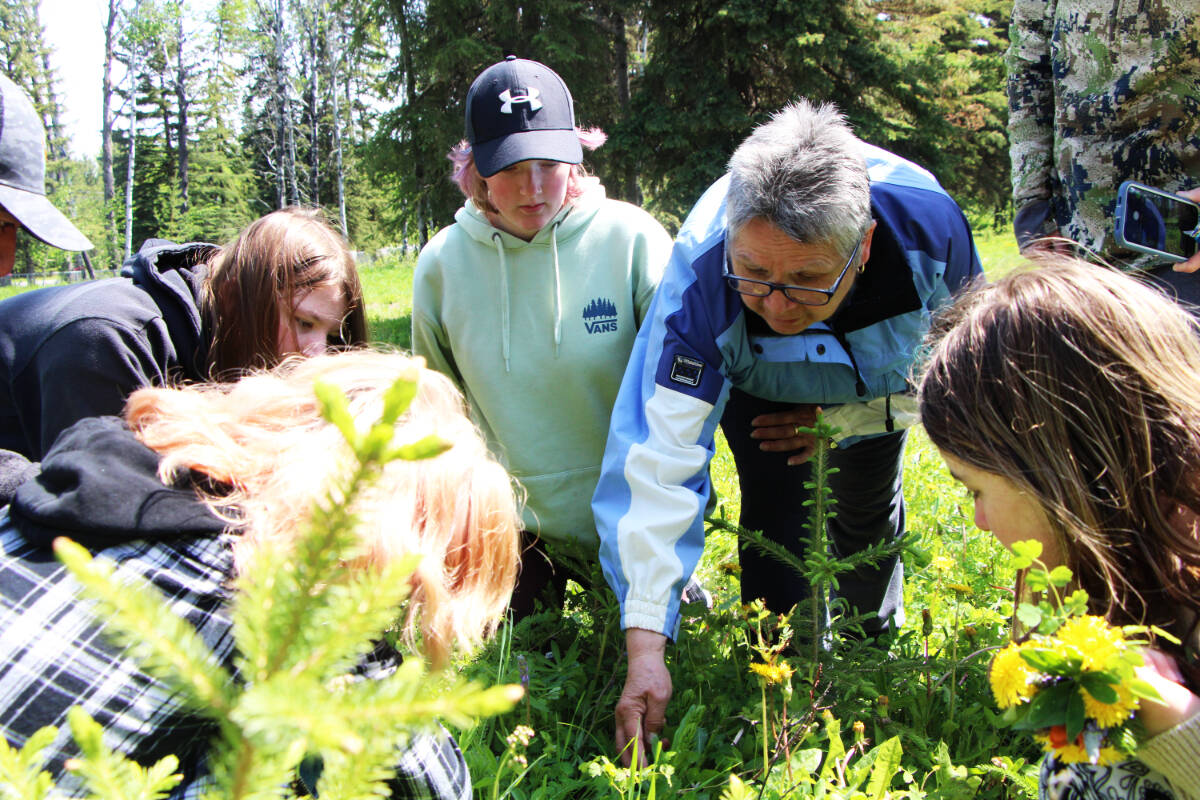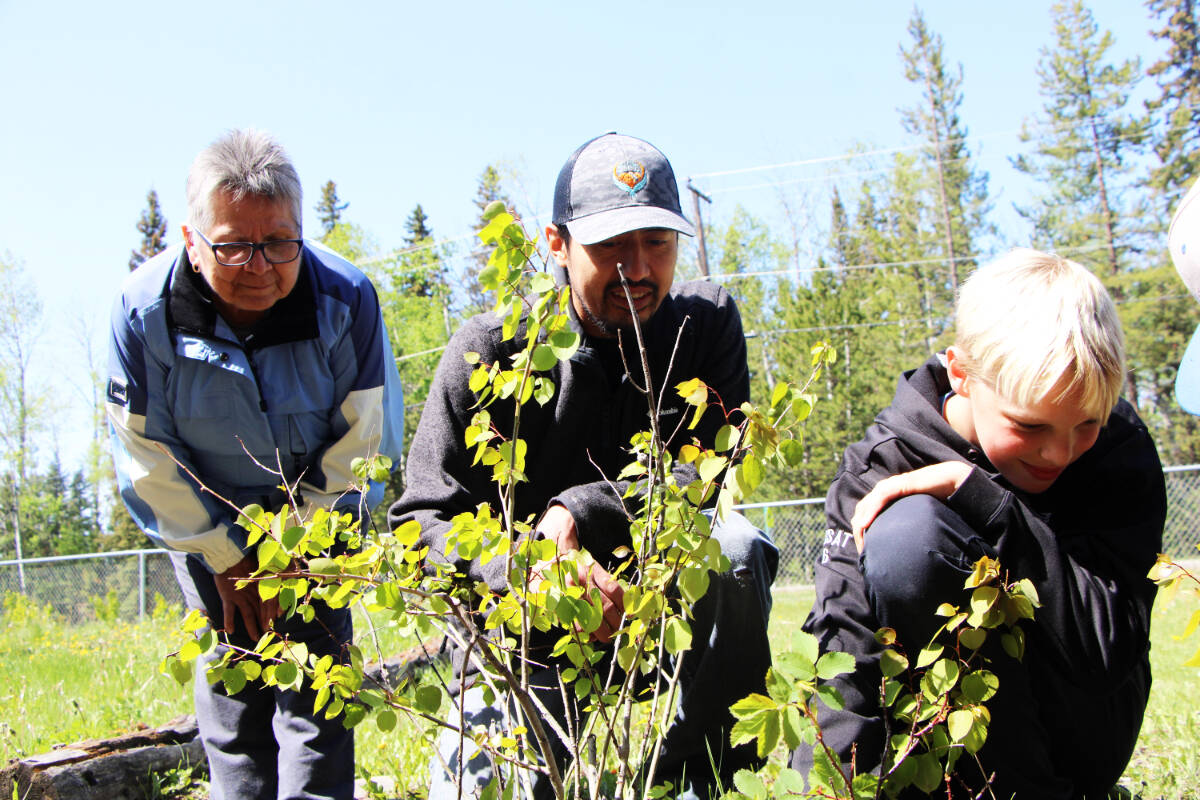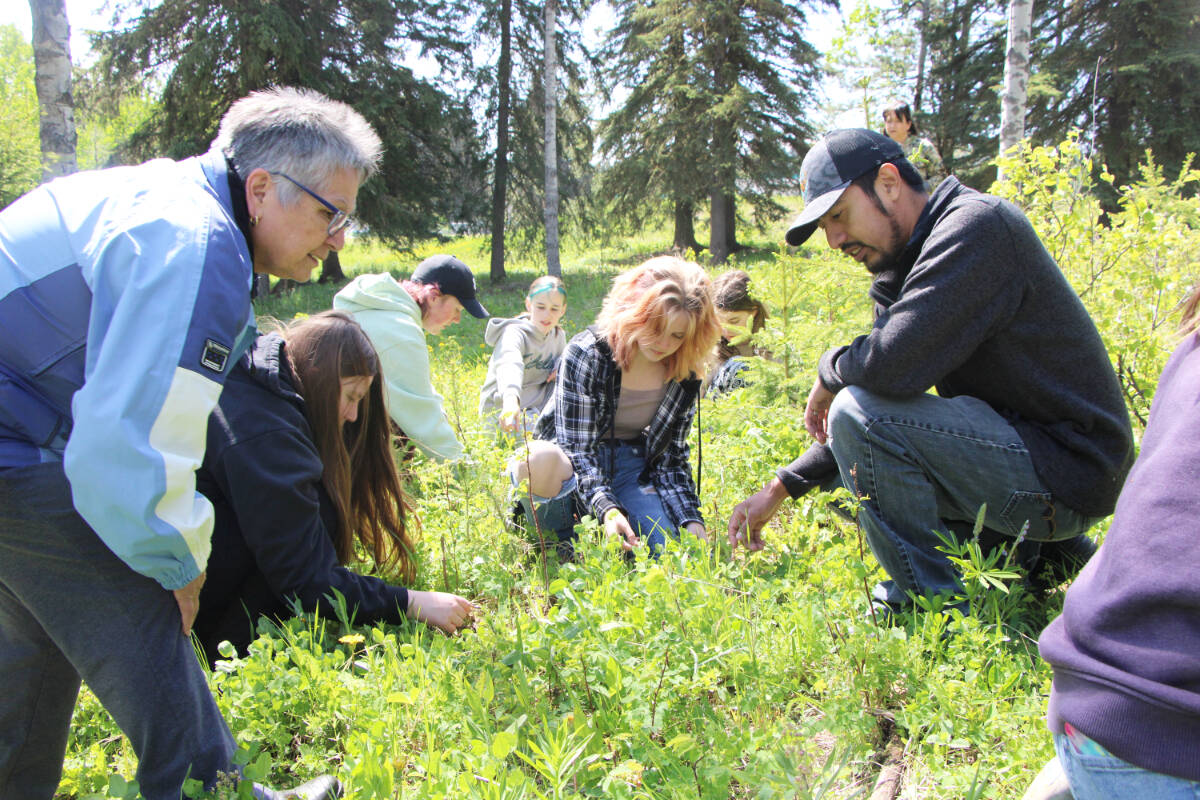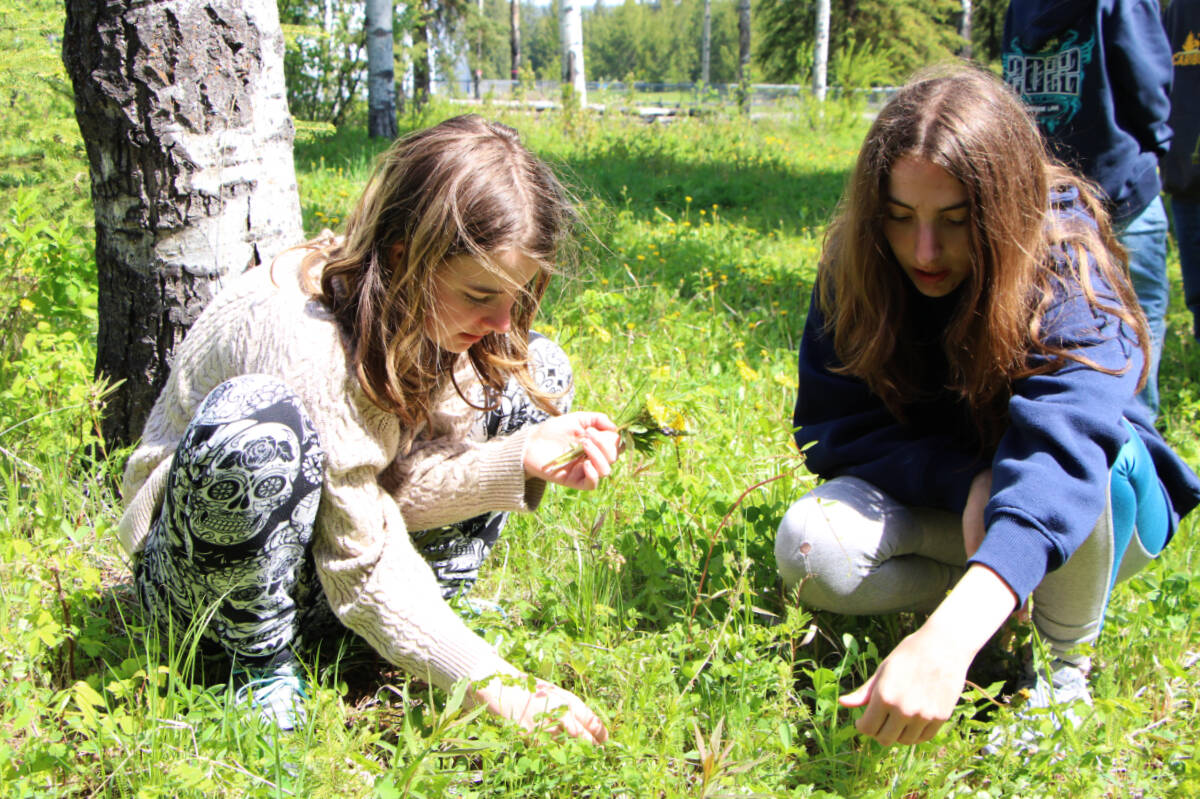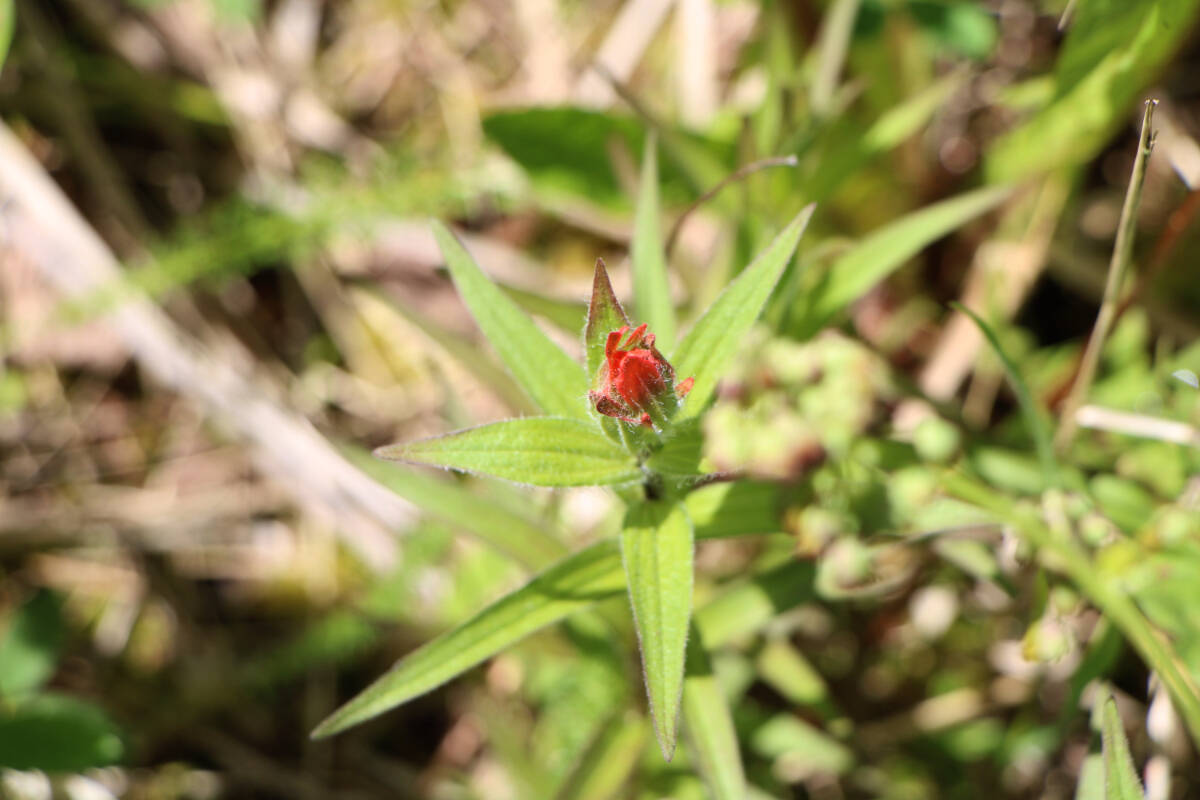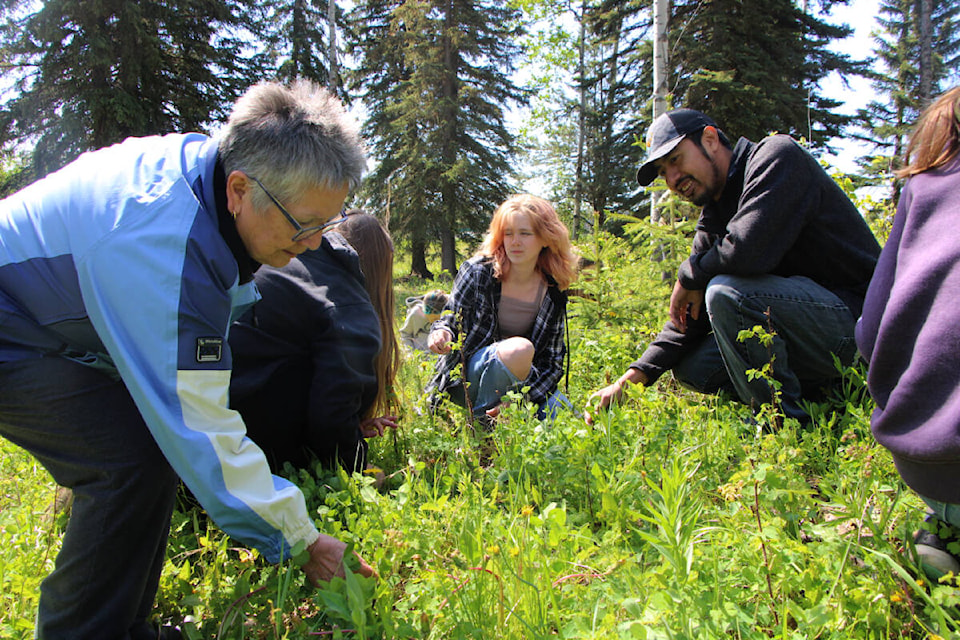Horse Lake Elementary School is planting a new Indigenous garden.
The project is being led by Lisa Pugh’s Grade 7 class who will transplant several local species of plants in the coming month. The plants were identified by Canim Lake Band cultural enrichment worker Joseph Archie and Elder Grace Archie, who found some already growing in the schoolyard.
“I think it’s a great idea that they want to do the garden. That way future students can learn about it too,” Joseph said Tuesday. “Sharing knowledge is something I’ve always been interested in and these guys want to learn so I’m happy to come out here and do this.”
Pugh said the garden project has been in the works for three years ever since she received a $1,500 grant from the Truth and Reconciliation Commission. The idea behind it was to work with local Elders and knowledge keepers to identify the plants and have the students cultivate the garden.
Working with Joseph and Grace, her students came up with a list of several different plants to include in the garden that were all used by Secwepemc people for food, medicine, ritual or technology purposes. They include wild blueberries, Saskatoon berries, Indian Paintbrush, wild raspberries, wild strawberries, bear berries, dandelions, Soopalali, Labrador tea, lupines, rose hips, Oregon grape, yarrow, nodding onion, plantain, wild chives, sage, fireweed, tiger lily, juniper, Balsamroot and thimbleberries.
“The garden will be a learning/teaching garden and a legacy project for years to come. Kids will be able to go out into the bush and identify these plants and know their uses,” Pugh said. “We have identified at least 20 plants and who knew, in our own schoolyard, we had this many plants?”
Joseph said they focused primarily on identifying plants with medicinal uses. The milk of dandelions, for example, is a good treatment for warts, while making tea from boiling Balsamroot is used for treating flu-like symptoms. He said he learned much of what he knows from his grandparents.
READ MORE: Tŝilhqot’in chiefs lean on government to better protect Indigenous heritage sites
Grace said she enjoyed discovering and identifying the plants with the students, as well as taking careful photos of every plant they couldn’t identify for later study. Together with the students, they found fireweed, yarrow, tiger lilies, green willow, dandelions and Balsamroot. She said finding the plants was a learning experience for her, too.
“When they first asked me to do it I said ‘I don’t know anything about this’ so yesterday I was scrambling around for information so I could learn. I knew quite a bit about a lot of the plants but not so much when it comes to the medicinal uses of the roots and bark,” Grace said.
Kylie Jensen and Hailey Piner said they enjoyed exploring their schoolyard and learning about its plants. Kylie said she found one plant that Grace and Joseph couldn’t identify but was confident they’d be able to figure it out. Discovering how some of the plants look before they grow was especially fascinating for Hailey.
“It was pretty cool because we found out they have multiple uses. Not only to eat but they can be used as medicine,” Hailey said.
Both girls were excited to find so many tiger lilies in the yard, especially after Joseph told them the Secwepemc people used to eat their bulbs as an anti-inflammatory to treat heart disease. Kylie said she thinks creating a traditional garden is a great idea as long as the younger students don’t accidentally trample it.
Hailey agreed: “It will definitely help us understand the true meaning of the plants and hopefully future students take care of the garden.”
patrick.davies@100milefreepress.net
Like us on Facebook and follow us on Twitter/p>
